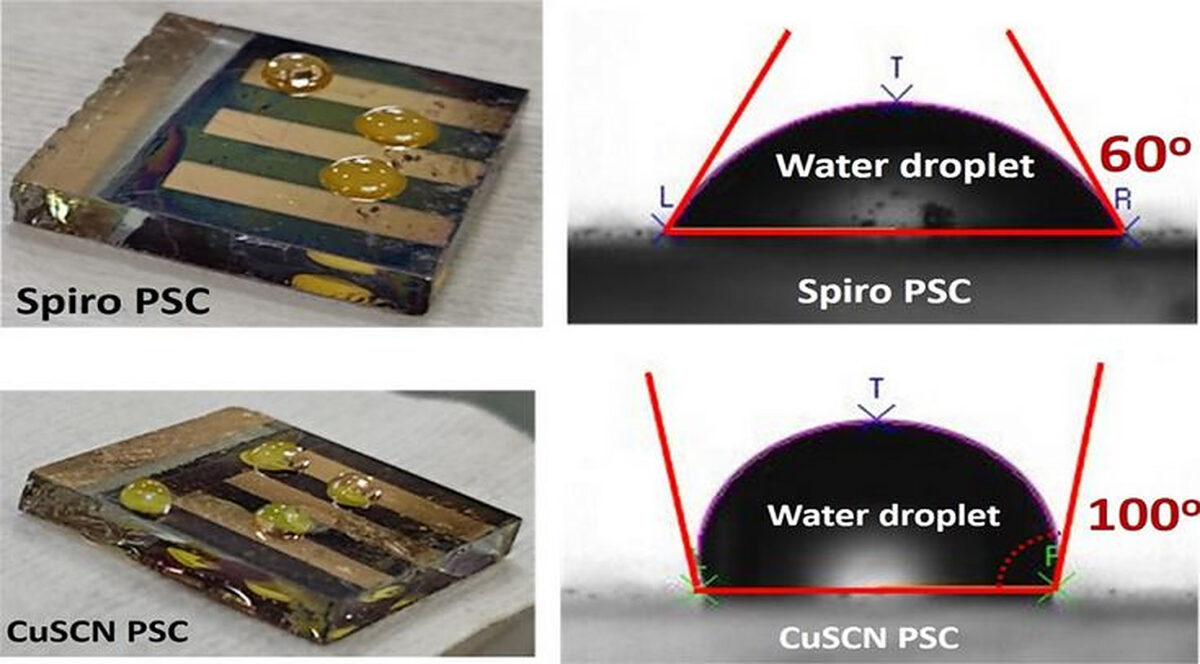Researchers at India's Department of Science and Technology have fabricated a perovskite solar cell with a hole-transporting material (HTM) made of copper thiocyanate (CuSCN), which is an inorganic semiconductor with a wide energy bandgap of 3.9 eV.
In “Dual-functional inorganic CuSCN for efficient hole extraction and moisture sealing of MAPbI3 perovskite solar cells” – recently published in Material Advances – the scientists explained that CuSCN has emerged as a stable HTM to replace Spiro-OMeTAD precursor as the latter leads to moisture ingress into the cell, which in turn degrades the perovskite absorber and reduces solar cell performance.
“With good transparency in the visible and near-infrared regions, appropriate band positions of CuSCN-based devices show matching efficiencies,” they said. “Solution-based low-temperature processability, cost-effectiveness, and reproducibility have made industrial viability feasible.”
The scientists built the cell with a fluorine-doped tin oxide (FTO) substrate, a titanium oxide (TiO2) electron transport layer, a halide perovskite known as α-formamidinium lead iodide known as α-FAPbI3, the CuSCN HTM, and gold (Au) metal contact.
“MAPbI3 films were deposited by a one-step process,” they said. “The perovskite films were then spin-coated with the hole transporting material, followed by the thermal evaporation of Au at a pressure of 10−6 mbar. For the HTM-free architecture, the MAPbI3 films were coated with gold without any HTM deposition.”
Popular content
The academics analyzed the performance of the solar cell and compared it with that of a reference solar cell with the same configuration and a Spiro-OMeTAD HTM. The measurements showed that the CuSCN-based device achieved a power conversion efficiency of 10.1%, which compares to 10.0% for the reference cell.
“The CuSCN-based cell retained 70% of its initial efficiency due to the robust nature of the CuSCN HTM, which is reflected in the devices exhibiting a high water contact angle,” they said.
They noted that the cell consists reduces moisture leaks in the device, which is common in cells that use Spiro-OMeTAD.
“The role of the CuSCN–Au interface here is shown to only act as a protective layer to the perovskite film by preventing moisture ingress, unlike the spiro–Au and MAPbI3–Au interfaces, which facilitate easy penetration,” they concluded. “This study shows that blanketing the perovskite with the CuSCN HTM serves as a moisture protection layer without any modification at the interface or in perovskite absorber layer.”
This content is protected by copyright and may not be reused. If you want to cooperate with us and would like to reuse some of our content, please contact: editors@pv-magazine.com.



Perovskite researchers, 2009: we have this great idea for cheap solar cells, though stability is a bit of a problem.
Perovskite researchers, 2023: we can make cheap solar cells, though stability is still a bit of a problem.
Its now 14 years in, and the stability issue has not been solved. I’m beginning to have a bad feeling about this. Silicon solar cells are now so cheap that anything less than their 40-year life will not be an acceptable tradeoff for a new technology offering lower production costs.